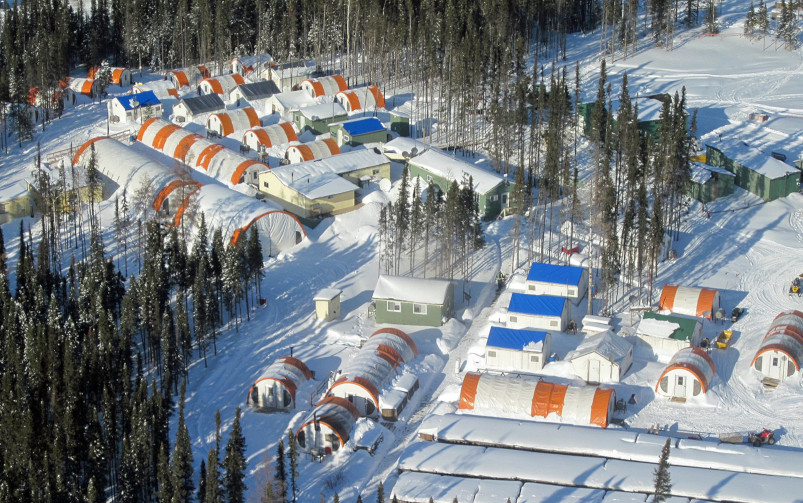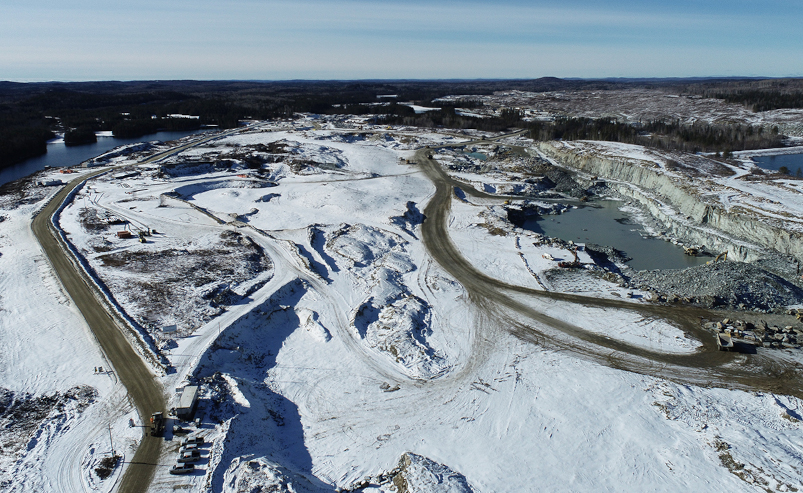BHP is moving its copper and nickel exploration headquarters to Toronto as Canada has become a hotspot for both metals. Courtesy of BHP.
(Like what you’re reading? Get our weekly recap delivered straight to your inbox each Friday.)
Welcome back to your weekly mining news recap, where we catch you up on some of the news you may have missed. This week’s headlines include BHP moving its copper and nickel headquarters to Canada, Artemis Project encouraging more inclusive procurement processes and Health Canada approving Zen’s graphene solution for application to facemasks to prevent the spread of COVID-19.
Newmont has agreed to buy GT Gold in a deal worth $393 million. The company will pay $3.25 per share for the 85.1 per cent of GT that it does not already own. With the acquisition, Newmont will add the Tatogga project and GT Gold’s 50-per cent stake in Galore Creek venture to its growing presence in the prospective Golden Triangle mineral region in British Columbia.
The Ontario government announced it is taking steps to develop a critical minerals strategy during a virtual press conference at the annual Prospectors & Developers Association of Canada (PDAC) Convention. The Ontario government plans to take advantage of the growing need for critical minerals and metals and leverage the province’s reputation as a safe, sustainable and responsible mining jurisdiction to attract investments, increase job opportunities for northern and Indigenous communities and move towards a greener economy.
Canadian Natural Resources Minister Seamus O’Regan revealed a newly created list of critical minerals at PDAC. He added that establishing the list is an important step for Canada, as it sends a message about the country’s intentions and priorities, particularly with regard to carbon reduction goals.
The federal government also announced it is investing $7.1 million to help fund the construction of two new wind turbines at Glencore’s Raglan nickel mine, in Nunavik, Quebec, adding to the turbines previously installed in 2014 and 2018. A total of six megawatts of power per year will be added to the mine’s capacity, while also lowering its CO2 emissions by 7,200 tonnes and reducing diesel use by over six million litres annually.
A global pandemic could not stop Victoria Gold from ramping up operations at its Eagle open-pit gold mine in Yukon. However, it did create a myriad of unexpected challenges. In order to ensure its employees’ safety, the mine worked at a slower pace, depended on phone calls and video conferencing, and implemented strict social-distancing and self-isolation policies. As a result, the mine was able to achieve commercial production last summer without any work suspensions.
The annual Canadian Mining Games was forced to go virtual this year because of the COVID-19 pandemic. Nevertheless, students from across Canada still had the opportunity to attend the two-day event to showcase their mining engineering skills in a variety of challenges and events and build connections with mining companies, industry partners and other students.
Artemis Project, an organization that works to support and advance women entrepreneurs in STEM-related industries, organized a panel discussion about how mining companies can diversify their supply chains to be more inclusive towards women-owned businesses. The panelists explained that women entrepreneurs are often disadvantaged for being part of smaller businesses, with limited visibility and budgets. Among the messages of the event, held on International Women’s Day, was a call to mining companies to be more open, transparent and fair in their procurement processes and to create targeted commitments towards diversity and inclusion.
Along with Natural Resource Canada, the Centre for Excellence in Mining Innovation has launched a Canadian Mineral Processing Ecosystem Innovation Portal (CMPIP). The online portal will offer an environment where members of the mineral processing ecosystem can connect and stay up to date on current mineral processing news, innovations and events.
Zen Graphene’s virucidal graphene-based ink has successfully been approved by Health Canada, as reported by Toronto Sun. The graphene ink technology will be applied to the materials of four-ply facemasks produced by Trebor Rx to protect against the spread of the COVID-19 virus. The masks are expected to reach the market by April.
BHP is moving its headquarters for copper and nickel exploration from Santiago, Chile to Toronto as reported by Financial Post. Canada has emerged as a hotspot for mineral exploration, according to BHP’s chief technical officer Laura Tyler. She added that the company is reinvesting in copper and nickel because it expects demand for both metals to increase as the electric vehicle industry expands and global trends transition to cleaner technologies and a low-carbon economy.
Ten years after the Fukushima nuclear disaster in Japan the impacts are still being felt in Canada’s uranium sector, reports the Saskatoon StarPhoenix. Throughout the past decade, uranium prices fell and have not really recovered. Mines have been idled, exploration spending has dried up and many workers laid off. Now, there seems to be an upswing for the sector as new reactors are being built around the world to support climate-change initiatives that include nuclear energy.
If you’ve got feedback, you can always reach us at editor@cim.org. If you’ve got something to add, why not join the conversation at our Facebook, Twitter or LinkedIn pages? Like your recap with a few more gifs? Check out our mining news recap stories on our Instagram.
Remember to stay safe, keep your distance and wash your hands!




